The global plastic packaging market is expected to grow from USD 345.91 billion in 2019 to USD 461.27 billion by 2027, at a CAGR of 4% during the forecast period 2020-2027.
Plastic packaging helps us in a number of ways to transport, secure, maintain, and safely store the goods. Its durable, air-tight, flexible, hygienic, reusable, lightweight and highly versatile. There are several types of plastics used for packaging such as polyethylene terephthalate, high-density polyethylene, polyvinyl chloride, polystyrene, polypropylene etc. Consumers have shown a growing tendency towards plastic packaging because of its ease of use and lightweight characteristics. Similarly, producers are also using plastic packaging solutions due to cost-effectiveness reasons.
This study delivers a comprehensive analysis of types, products, applications and regions. The research includes growth drivers as well as challenges prevalent in the global plastic packaging market along with the impact they will have on the overall demand during the forecasted period. Additionally, the study also includes various opportunities & threats that are present in the plastic packaging market. The type segment includes rigid plastics packaging and flexible plastics packaging segments. The rigid packaging segment accounted for the majority market share in the year 2016. This segment is anticipated to continue to lead the market due to the growing demand for goods being wrapped in plastic covers. It is also anticipated that during the projected timespan, the flexible packaging category will increase in value, as more industries will become involved in using goods that specifically need this type of plastic packaging.
The market has been divided into North America, Europe, Asia-Pacific, Middle East & Africa, and South America. With rapid industrialisation, rising population, growing consumer spending, and increasing purchasing power & disposable income, the Asia-Pacific region stands as a promising market for plastic packaging. It is expected to grow at the highest CAGR during the forecast period. It is also projected to be the largest market globally. The APAC region is followed closely by North America in 2nd place and Europe in 3rd place.
Some of the notable players in the plastic packaging market are Bemis Company Inc., Mondi, Amcor Limited, DS Smith, Berry Plastics Corporation, Zhuhai Zhongfu Enterprise Co. Limited, and Huhtamaki, among others. The key players are now concentrating on implementing strategies such as adopting new technology, product innovations, mergers & acquisitions, joint venture, alliances, and partnerships to improve their market position in the global plastic packaging industry.
For instance, Sealed Air stated in October 2018 that its creative packaging solutions would be 100 per cent recyclable & reusable by 2025. The organisation must work with other parties to ensure the latest project is undertaken.
This study predicts revenue growth at global, national, and country levels from 2020 to 2027. Fior Markets has segmented the market based on below-mentioned segments:
Global Plastic Packaging Market Analysis And Forecast, By Type
Global Plastic Packaging Market Analysis And Forecast, By Product
Global Plastic Packaging Market Analysis And Forecast, By Application
Global Plastic Packaging Market Analysis And Forecast, By Regional Analysis
Report Description:
1. Introduction
1.1. Objectives of the Study
1.2. Market Definition
1.3. Research Scope
1.4. Currency
1.5. Key Target Audience
2. Research Methodology and Assumptions
3. Executive Summary
4. Premium Insights
4.1. Porter’s Five Forces Analysis
4.2. Value Chain Analysis
4.3. Top Investment Pockets
4.3.1. Market Attractiveness Analysis By Type
4.3.2. Market Attractiveness Analysis By Product
4.3.3. Market Attractiveness Analysis By Application
4.3.4. Market Attractiveness Analysis By Region
4.4. Industry Trends
5. Market Dynamics
5.1. Market Evaluation
5.2. Drivers
5.3. Restrains
5.4. Opportunities
5.5. Challenges
6. Global Plastic Packaging Market Analysis and Forecast, By Type
6.1. Segment Overview
6.2. Rigid
6.3. Flexible
7. Global Plastic Packaging Market Analysis and Forecast, By Product
7.1. Segment Overview
7.2. Bags
7.3. Cans
7.4. Bottles
7.5. Pouches
7.6. Wraps & Films
7.7. Others
8. Global Plastic Packaging Market Analysis and Forecast, By Application
8.1. Segment Overview
8.2. Pharmaceuticals
8.3. Personal & Household Care
8.4. Industrial Packaging
8.5. Food & Beverages
8.6. Others
9. Global Plastic Packaging Market Analysis and Forecast, By Regional Analysis
9.1. Segment Overview
9.2. North America
9.2.1. U.S.
9.2.2. Canada
9.2.3. Mexico
9.3. Europe
9.3.1. Germany
9.3.2. France
9.3.3. U.K.
9.3.4. Italy
9.3.5. Spain
9.4. Asia-Pacific
9.4.1. Japan
9.4.2. China
9.4.3. India
9.5. South America
9.5.1. Brazil
9.6. Middle East and Africa
9.6.1. UAE
9.6.2. South Africa
10. Global Plastic Packaging Market-Competitive Landscape
10.1. Overview
10.2. Market Share of Key Players in Global Plastic Packaging Market
10.2.1. Global Company Market Share
10.2.2. North America Company Market Share
10.2.3. Europe Company Market Share
10.2.4. APAC Company Market Share
10.3. Competitive Situations and Trends
10.3.1. Product Launches and Developments
10.3.2. Partnerships, Collaborations, and Agreements
10.3.3. Mergers & Acquisitions
10.3.4. Expansions
11. Company Profiles
11.1. Bemis Company Inc.
11.1.1. Business Overview
11.1.2. Company Snapshot
11.1.3. Company Market Share Analysis
11.1.4. Company Product Portfolio
11.1.5. Recent Developments
11.1.6. SWOT Analysis
11.2. Mondi
11.2.1. Business Overview
11.2.2. Company Snapshot
11.2.3. Company Market Share Analysis
11.2.4. Company Product Portfolio
11.2.5. Recent Developments
11.2.6. SWOT Analysis
11.3. Amcor Limited
11.3.1. Business Overview
11.3.2. Company Snapshot
11.3.3. Company Market Share Analysis
11.3.4. Company Product Portfolio
11.3.5. Recent Developments
11.3.6. SWOT Analysis
11.4. DS Smith
11.4.1. Business Overview
11.4.2. Company Snapshot
11.4.3. Company Market Share Analysis
11.4.4. Company Product Portfolio
11.4.5. Recent Developments
11.4.6. SWOT Analysis
11.5. Berry Plastics Corporation
11.5.1. Business Overview
11.5.2. Company Snapshot
11.5.3. Company Market Share Analysis
11.5.4. Company Product Portfolio
11.5.5. Recent Developments
11.5.6. SWOT Analysis
11.6. Zhuhai Zhongfu Enterprise Co. Limited
11.6.1. Business Overview
11.6.2. Company Snapshot
11.6.3. Company Market Share Analysis
11.6.4. Company Product Portfolio
11.6.5. Recent Developments
11.6.6. SWOT Analysis
11.7. Huhtamaki
11.7.1. Business Overview
11.7.2. Company Snapshot
11.7.3. Company Market Share Analysis
11.7.4. Company Product Portfolio
11.7.5. Recent Developments
11.7.6. SWOT Analysis
List of Table
1. Global Plastic Packaging Market, By Type, 2017–2027 (USD Billion)(Kilotons)
2. Global Rigid Plastic Packaging Market, By Region, 2017–2027 (USD Billion)(Kilotons)
3. Global Flexible Plastic Packaging Market, By Region, 2017–2027 (USD Billion)(Kilotons)
4. Global Plastic Packaging Market, By Product, 2017–2027 (USD Billion)(Kilotons)
5. Global Bags, Plastic Packaging Market, By Region, 2017–2027 (USD Billion)(Kilotons)
6. Global Cans, Plastic Packaging Market, By Region, 2017–2027 (USD Billion)(Kilotons)
7. Global Bottles, Plastic Packaging Market, By Region, 2017–2027 (USD Billion)(Kilotons)
8. Global Pouches, Plastic Packaging Market, By Region, 2017–2027 (USD Billion)(Kilotons)
9. Global Wraps & Films, Plastic Packaging Market, By Region, 2017–2027 (USD Billion)(Kilotons)
10. Global Others, Plastic Packaging Market, By Region, 2017–2027 (USD Billion)(Kilotons)
11. Global Plastic Packaging Market, By Application, 2017–2027 (USD Billion)(Kilotons)
12. Global Pharmaceuticals Plastic Packaging Market, By Region, 2017–2027 (USD Billion)(Kilotons)
13. Global Personal & Household Care Plastic Packaging Market, By Region, 2017–2027 (USD Billion)(Kilotons)
14. Global Industrial Packaging Plastic Packaging Market, By Region, 2017–2027 (USD Billion)(Kilotons)
15. Global Food & Beverages Plastic Packaging Market, By Region, 2017–2027 (USD Billion)(Kilotons)
16. Global Others Plastic Packaging Market, By Region, 2017–2027 (USD Billion)(Kilotons)
17. Global Plastic Packaging Market, By Region, 2017–2027 (USD Billion)(Kilotons)
18. Global Plastic Packaging Market, By North America, 2017–2027 (USD Billion)(Kilotons)
19. North America Plastic Packaging Market, By Type, 2017–2027 (USD Billion)(Kilotons)
20. North America Plastic Packaging Market, By Product, 2017–2027 (USD Billion)(Kilotons)
21. North America Plastic Packaging Market, By Application, 2017–2027 (USD Billion)(Kilotons)
22. U.S. Plastic Packaging Market, By Type, 2017–2027 (USD Billion)(Kilotons)
23. U.S. Plastic Packaging Market, By Product, 2017–2027 (USD Billion)(Kilotons)
24. U.S. Plastic Packaging Market, By Application, 2017–2027 (USD Billion)(Kilotons)
25. Canada Plastic Packaging Market, By Type, 2017–2027 (USD Billion)(Kilotons)
26. Canada Plastic Packaging Market, By Product, 2017–2027 (USD Billion)(Kilotons)
27. Canada Plastic Packaging Market, By Application, 2017–2027 (USD Billion)(Kilotons)
28. Mexico Plastic Packaging Market, By Type, 2017–2027 (USD Billion)(Kilotons)
29. Mexico Plastic Packaging Market, By Product, 2017–2027 (USD Billion)(Kilotons)
30. Mexico Plastic Packaging Market, By Application, 2017–2027 (USD Billion)(Kilotons)
31. Europe Plastic Packaging Market, By Type, 2017–2027 (USD Billion)(Kilotons)
32. Europe Plastic Packaging Market, By Product, 2017–2027 (USD Billion)(Kilotons)
33. Europe Plastic Packaging Market, By Application, 2017–2027 (USD Billion)(Kilotons)
34. Germany Plastic Packaging Market, By Type, 2017–2027 (USD Billion)(Kilotons)
35. Germany Plastic Packaging Market, By Product, 2017–2027 (USD Billion)(Kilotons)
36. Germany Plastic Packaging Market, By Application, 2017–2027 (USD Billion)(Kilotons)
37. France Plastic Packaging Market, By Type, 2017–2027 (USD Billion)(Kilotons)
38. France Plastic Packaging Market, By Product, 2017–2027 (USD Billion)(Kilotons)
39. France Plastic Packaging Market, By Application, 2017–2027 (USD Billion)(Kilotons)
40. U.K. Plastic Packaging Market, By Type, 2017–2027 (USD Billion)(Kilotons)
41. U.K. Plastic Packaging Market, By Product, 2017–2027 (USD Billion)(Kilotons)
42. U.K. Plastic Packaging Market, By Application, 2017–2027 (USD Billion)(Kilotons)
43. Italy Plastic Packaging Market, By Type, 2017–2027 (USD Billion)(Kilotons)
44. Italy Plastic Packaging Market, By Product, 2017–2027 (USD Billion)(Kilotons)
45. Italy Plastic Packaging Market, By Application, 2016–2026(USD Million)(Units)
46. Spain Plastic Packaging Market, By Type, 2017–2027 (USD Billion)(Kilotons)
47. Spain Plastic Packaging Market, By Product, 2017–2027 (USD Billion)(Kilotons)
48. Spain Plastic Packaging Market, By Application, 2017–2027 (USD Billion)(Kilotons)
49. Asia Pacific Plastic Packaging Market, By Type, 2017–2027 (USD Billion)(Kilotons)
50. Asia Pacific Plastic Packaging Market, By Product, 2017–2027 (USD Billion)(Kilotons)
51. Asia Pacific Plastic Packaging Market, By Application, 2017–2027 (USD Billion)(Kilotons)
52. Japan Plastic Packaging Market, By Type, 2017–2027 (USD Billion)(Kilotons)
53. Japan Plastic Packaging Market, By Product, 2017–2027 (USD Billion)(Kilotons)
54. Japan Plastic Packaging Market, By Application, 2017–2027 (USD Billion)(Kilotons)
55. China Plastic Packaging Market, By Type, 2017–2027 (USD Billion)(Kilotons)
56. China Plastic Packaging Market, By Product, 2017–2027 (USD Billion)(Kilotons)
57. China Plastic Packaging Market, By Application, 2017–2027 (USD Billion)(Kilotons)
58. India Plastic Packaging Market, By Type, 2017–2027 (USD Billion)(Kilotons)
59. India Plastic Packaging Market, By Product, 2017–2027 (USD Billion)(Kilotons)
60. India Plastic Packaging Market, By Application, 2017–2027 (USD Billion)(Kilotons)
61. South America Plastic Packaging Market, By Type, 2017–2027 (USD Billion)(Kilotons)
62. South America Plastic Packaging Market, By Product, 2017–2027 (USD Billion)(Kilotons)
63. South America Plastic Packaging Market, By Application, 2017–2027 (USD Billion)(Kilotons)
64. Brazil Plastic Packaging Market, By Type, 2017–2027 (USD Billion)(Kilotons)
65. Brazil Plastic Packaging Market, By Product, 2017–2027 (USD Billion)(Kilotons)
66. Brazil Plastic Packaging Market, By Application, 2017–2027 (USD Billion)(Kilotons)
67. Middle East and Africa Plastic Packaging Market, By Type, 2017–2027 (USD Billion)(Kilotons)
68. Middle East and Africa Plastic Packaging Market, By Product, 2017–2027 (USD Billion)(Kilotons)
69. Middle East and Africa Plastic Packaging Market, By Application, 2017–2027 (USD Billion)(Kilotons)
70. UAE Plastic Packaging Market, By Type, 2017–2027 (USD Billion)(Kilotons)
71. UAE Plastic Packaging Market, By Product, 2017–2027 (USD Billion)(Kilotons)
72. UAE Plastic Packaging Market, By Application, 2017–2027 (USD Billion)(Kilotons)
73. South Africa Plastic Packaging Market, By Type, 2017–2027 (USD Billion)(Kilotons)
74. South Africa Plastic Packaging Market, By Product, 2017–2027 (USD Billion)(Kilotons)
75. South Africa Plastic Packaging Market, By Application, 2017–2027 (USD Billion)(Kilotons)
List of Figures
1. Global Plastic Packaging Market Segmentation
2. Plastic Packaging Market: Research Methodology
3. Market Size Estimation Methodology: Bottom-Up Approach
4. Market Size Estimation Methodology: Top-Down Approach
5. Data Triangulation
6. Porter’s Five Forces Analysis
7. Value Chain Analysis
8. Global Plastic Packaging Market Attractiveness Analysis By Type
9. Global Plastic Packaging Market Attractiveness Analysis By Product
10. Global Plastic Packaging Market Attractiveness Analysis By Application
11. Global Plastic Packaging Market Attractiveness Analysis By Region
12. Global Plastic Packaging Market: Dynamics
13. Global Plastic Packaging Market Share By Type (2019 & 2027)
14. Global Plastic Packaging Market Share By Product (2019 & 2027)
15. Global Plastic Packaging Market Share By Application (2019 & 2027)
16. Global Plastic Packaging Market Share by Regions (2019 & 2027)
17. Global Plastic Packaging Market Share by Company (2019)
Market research is a method of gathering, assessing and deducing data & information about a particular market. Market research is very crucial in these days. The techniques analyze about how a product/service can be offered to the market to its end-customers, observe the impact of that product/service based on the past customer experiences, and cater their needs and demands. Owing to the successful business ventures, accurate, relevant and thorough information is the base for all the organizations because market research report/study offers specific market related data & information about the industry growth prospects, perspective of the existing customers, and the overall market scenario prevailed in past, ongoing present and developing future. It allows the stakeholders and investors to determine the probability of a business before committing substantial resources to the venture. Market research helps in solving the marketing issues challenges that a business will most likely face.
Market research is valuable because of the following reasons:
Our research report features both the aspects; qualitative and quantitative. Qualitative part provides insights about the market driving forces, potential opportunities, customer’s demands and requirement which in turn help the companies to come up with new strategies in order to survive in the long run competition. The quantitative segment offers the most credible information related to the industry. Based on the data gathering, we use to derive the market size and estimate their future growth prospects on the basis of global, region and country.
Our market research process involves with the four specific stages.

Data Collection: This stage of the market research process involves with the gathering and collecting of the market/industry related data from the sources. There are basically two types of research methods:
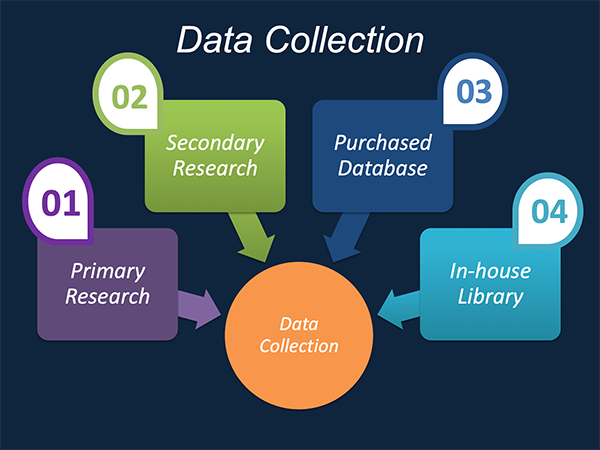
Data Synthesis: This stage includes the evaluation and assessment of all the data acquired from the primary and secondary research. It likewise includes in evaluating the information for any disparity watched while information gathering identified with the market. The data & information is gathered with consideration to the heterogeneity of sources. Scientific and statistical methods are implemented for synthesizing dissimilar information sets and provide the relevant data which is fundamental for formulating strategies. Our organization has broad involvement with information amalgamation where the information goes through different stages:


Market Formulation & Deduction: The last stage includes assigning the data & information in a suitable way in order to derive market size. Analyst reviews and domain based opinions based on holistic approach of market estimation combined with industry investigation additionally features a crucial role in this stage.
This stage includes with the finalization of the market size and numbers that we have gathered from primary and secondary research. With the data & information addition, we ensure that there is no gap in the market information. Market trend analysis is finished by our analysts by utilizing data extrapolation procedures, which give the most ideal figures to the market.
Data Validation: Validation is the most crucial step in the process. Validation & re-validation through scientifically designed technique and process that helps us finalize data-points to be used for final calculations. This stage also involves with the data triangulation process. Data triangulation generally implicates the cross validation and matching the data which has been collected from primary and secondary research methods.





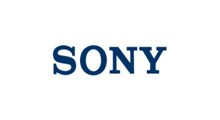

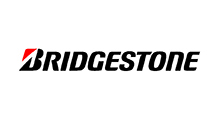

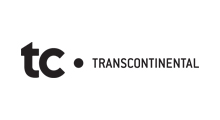















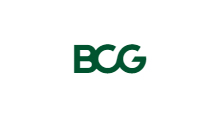


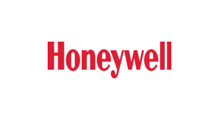

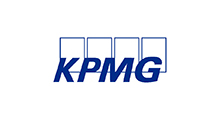
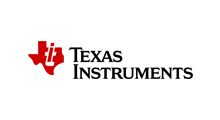



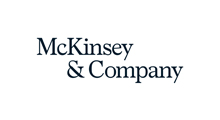

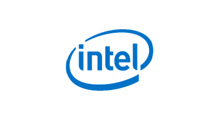







Free Customization
Countries can be added on demand
Free yearly update on purchase of Multi/Corporate User License
Companies served till date

We serve our customers 24x7 for 365 days through calls, emails and live chat options.
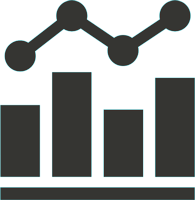
Huge database of exceptional market reports bringing market intelligence to your fingertips.

SSL enabled, we offer you various secured payment options for risk free purchase.